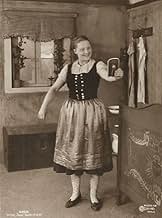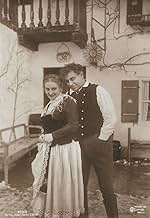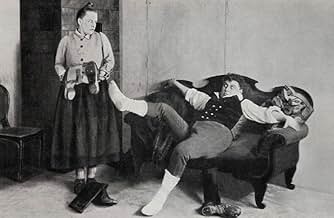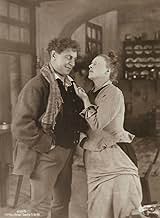'Kohlhiesel's Daughters' was the most successful film of Ernst Lubitsch's German period; it was extremely popular at the box office, and was re-released more than once. The story takes its basic premise from 'The Taming of the Shrew', relocated to 19th-century Bavaria.
Innkeeper Kohlhiesel has two daughters whom he wants to marry off. Younger daughter Gretel is pretty and popular; no shortage of suitors there, then. But older daughter Liesel is a hellion who has no interest in dressing nicely or pleasing men. Naturally, no man will have her ... and tradition in 19th-century Bavaria requires that Kohlhiesel's younger daughter cannot marry before the elder daughter.
Although plenty of men want to marry Gretel, the man whom she wants to marry is Xaver ... played by Emil Jannings. I hesitate to describe this Falstaffian actor as 'handsome' or 'slim', but in this movie Jannings comes far closer to those traits than I would have thought possible for him. A few years later (and several stone heavier), Jannings often played men who were sexually humiliated; here, he's surprisingly virile and athletic. Realising that he cannot marry Gretel before Liesel lands a husband, Xaver decides to marry Liesel ... intending to divorce her as soon as possible, so that he can marry Gretel. (Would their father really consent to this?)
The two sisters are played by the same actress: Henny Porten, who makes almost no attempt to differentiate her physical appearance for the two roles. Because of this casting gimmick, I kept expecting some plot twist to exploit the resemblance between the two sisters: one sister impersonates the other, or one of Gretel's swains mistakes Liesel for Gretel. In the event, none of those things occur. There is one amusing shot in which Gretel runs through an alley, followed a moment later by Liesel: the same actress in a different costume. But if the two sisters had been played by different actresses, this coup de theatre would have had no point at all. We never do see the sisters together, which would have required a double-exposure or a stand-in.
Interestingly, there are some sophisticated photographic effects in this movie. (Credit the brilliant photographer Theodor Sparkuhl.) At one point there's a burst wipe. Near the end of the film, when Liesel decides to prettify herself to please her husband Xaver, the transition from dowdy to dainty is achieved with a graceful dissolve. A couple of times, the camera speeds up the actors for comic effect; I truly loathe this grossly overused device when it turns up in modern films, but in 1920 it was still somewhat a novelty.
Although Jannings is excellent, and Henny Porten is good in her two roles (though not good enough to justify the dual-role casting gimmick), the best performance in this film is given by the harridan actress who plays Frau Kohlhiesel, the innkeeper's wife. With a few understated bits of body language, she convincingly (and hilariously) creates the character of an overworked peasant wife. I'll rate this movie 6 out of 10.

























